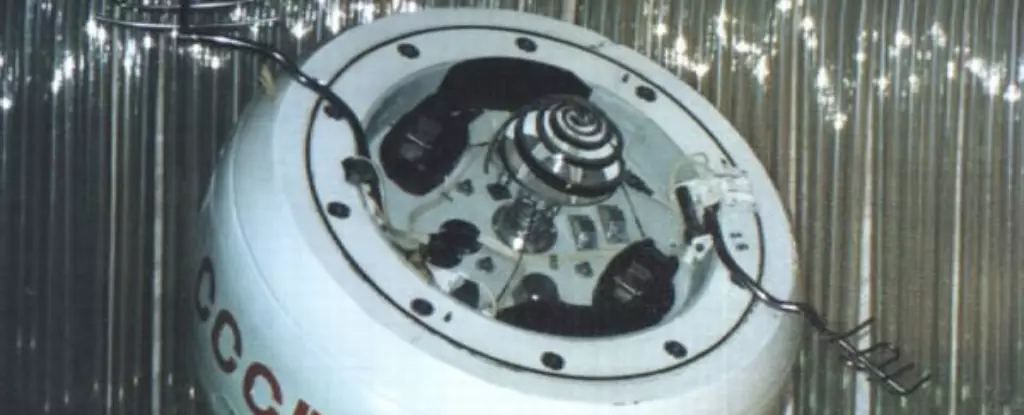As the world gears up to bid farewell to one of its oldest space artifacts, the impending reentry of Kosmos-482 serves as a poignant reminder of the complexities and triumphs of early space exploration. Launched in 1972, this mission from the now-defunct Soviet Union has spent over five decades drifting in the dark expanses of Earth’s orbit, tantalizing enthusiasts and historians alike. With its imminent descent, the occasion invites a deeper reflection on what Kosmos-482 represents—a link to an era defined by rivalry, ambition, and the relentless pursuit of knowledge.
Kosmos-482’s story is not just one of failure; it encapsulates the audacity of human innovation amid geopolitical tensions. Initially launched with aspirations toward the planet Venus, the mission went awry due to an anomaly quite typical of its time. Stranded in low Earth orbit, it ultimately became a footnote in the grand saga of the Soviet space program, evoking curiosity about both its functionality and enduring legacy.
Historical Context and Anomalies
Kosmos-482’s launch occurred during a palpable period of tension—the Cold War—when public knowledge about space missions was often shrouded in secrecy. Unlike the current era of information accessibility, the Soviet Union provided scant details regarding its advancements or setbacks. The failure of Kosmos-482—attributed to a timer malfunction—did not receive formal acknowledgment from Soviet authorities. Instead, it was relegated to obscurity, characterized merely by its designation. In hindsight, such obscurity only amplifies the allure of the mission, painting it as a mysterious artifact from a past era.
This pattern of secrets and missteps echoed in later attempts, as seen in the failed Phobos-Grunt mission in 2012. Each incident reflects a hallmark of the Russian space narrative; ambitions were grand, yet the route was often fraught with challenges. And while the Soviet Venera program achieved a notable success rate, the aftermath, particularly in the post-Soviet era, has been marked by retrenchment and inertia in planetary exploration.
The Science Behind the Fall
As we approach Kosmos-482’s reentry, scientific predictions about the event are becoming sharper, largely thanks to advancements in satellite tracking technologies. While the exact trajectory of reentry remains an educated estimate, experts are analyzing its characteristics. Kosmos-482 is predicted to follow a long and shallow descent path, a trajectory that raises questions about the object’s potential survivability through the Earth’s atmosphere. Designed to endure the hellish heat of Venus, would it withstand a fiery return to its home planet? Satellite analyst Marco Langbroek posits that the lander might indeed survive, adding a hint of intrigue to the scenario.
Despite weighing roughly 500 kilograms—a notable mass compared to other historical satellites—Kosmos-482 poses minimal risk to individuals on the ground as it meets its end. Historical comparisons reveal a sobering reality; space exploration has seen vehicles of all sizes reenter the atmosphere, yet none have created significant hazards. The implications of more debris, however, raise concern, especially as the cosmos becomes increasingly cluttered with satellites and spent machinery.
The Crowded Skies: A Modern Dilemma
Kosmos-482’s fate should remind us of the continuous struggle to manage the burgeoning issue of space debris. As more entities, both corporate and governmental, venture into the cosmos, the risk of collision increases exponentially. Companies like SpaceX, OneWeb, and Amazon are elevating the stakes by launching vast constellations intended for global connectivity and technological advancement. Ironically, the very quest for progress threatens to inhibit the safe exploration of space and what remains of its celestial mysteries.
Space enthusiasts are advised to witness the upcoming spectacle—a testament to ingenuity, resilience, and the technological prowess of the Cold War era—that is Kosmos-482. As it lights up the skies in a final, fiery display, it starkly contrasts with the increasing congestion above. While there are assurances about the safety of nearby populations, the ascent of space debris and the frantic pace of new launches necessitate a broader conversation about sustainable practices in space exploration.
In contemplating Kosmos-482’s impending demise, we are afforded an opportunity to think critically about our relationship with the universe. The story encapsulates more than just a satellite; it represents humanity’s enduring quest for discovery amid shifting tides of national pride, secrecy, and a relentless drive for achievement. It’s up to us to ensure that this legacy doesn’t succumb to the very chaos we’ve created in the pursuit of innovation.


Leave a Reply